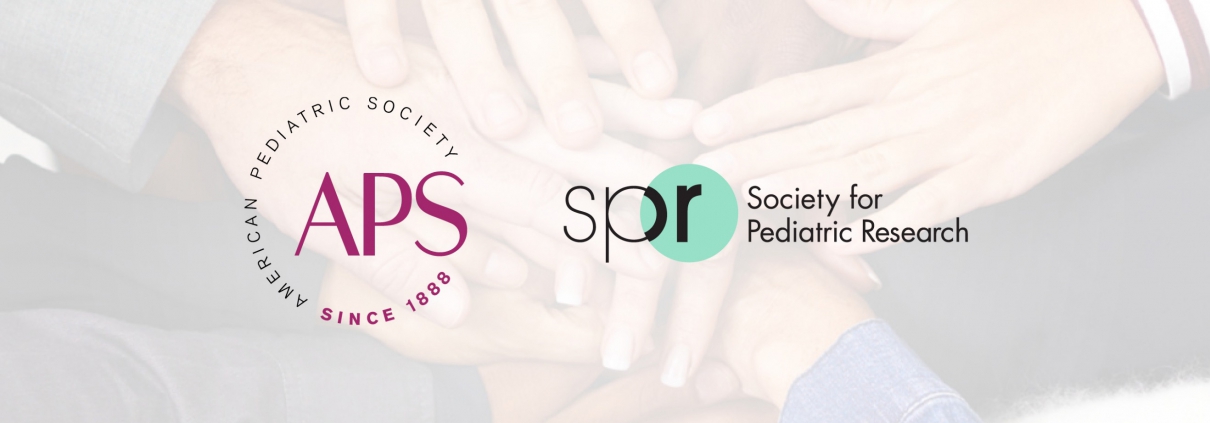Pediatric Policy Council Update
The APS and SPR are members of the Pediatric Policy Council (PPC) which actively advocates for children and academic pediatrics at the federal level. APS representatives to the PPC are Drs. DeWayne Pursley and Jonathan M. Davis; Drs. Joyce Javier and Shetal Shah represent the SPR.
The PPC also includes representatives from the Academic Pediatric Association (APA) and the Association of Medical School Pediatric Department Chairs (AMSPDC). The PPC is based in the Washington DC office of the American Academy of Pediatrics (AAP), who supplies staff and other support.
The latest advocacy developments are summarized by the PPC below
PPC CAPITOL CONNECTION
January 14, 2020
What Matters Now in Washington:
- Congress funded gun violence research for the first time in decades alongside other significant wins for child health in a year-end funding package.
- A Trump administration guidance removing some flavored e-cigarettes from the market failed to take the action needed to protect child health.
- A federal appeals court found the individual mandate unconstitutional but did not rule on whether the rest of the ACA can stand without the penalty.
- PPC authored policy commentaries in Pediatric Research exploring the intersections of child health policy, advocacy, and pediatric research.
Historic Achievement as Congress Funds Gun Violence Research in Year-End Spending Package. In a stunning flurry of year-end activity, Congress closed out the decade with a $1.4 trillion federal spending package that included historic investments in pediatric research. The deal came as Congress faced a December 20 government funding deadline and a host of politically sensitive issues. For the first time in more than two decades, the bill includes dedicated funding for gun violence prevention research—a total of $25 million split evenly between the Centers for Disease Control and Prevention (CDC) and the National Institutes of Health (NIH). The PPC played an integral role in developing the funding recommendation that informed the $25 million agreement, and the pediatric community spearheaded the advocacy push that reignited the long-dormant conversation on Capitol Hill about the need for public health research on this critical issue. It represents an enormous step forward in efforts to reduce the injury and death caused by firearms and to reduce the toll of gun violence on children.
—Congress Invests in Pediatric Research Priorities. Congress also invested in a number of other pediatric research priorities. The NIH received a $2.6 billion funding boost for a total funding level of $41.7 billion, including a $50 million increase for the Eunice Kennedy Shriver National Institute of Child Health and Human Development (NICHD) and a $15 million increase for the Environmental influences on Child Health Outcomes (ECHO) program for an aggregate of $180 million. The appropriations package also included a 10-year reauthorization of the Patient-Centered Outcomes Research Institute (PCORI), which was established through the Affordable Care Act (ACA) to fund research that helps patients and caregivers make better-informed health care decisions.
In another important child health victory, the 2020 Census received dedicated funding of $6.7 billion, which will help ensure the decennial count can be administered fully and accurately; Census data is key in conducting longitudinal child health research and is used to determine the geographic distribution of $1.5 trillion in federal spending annually. The Children’s Hospital Graduate Medical Education (CHGME) program received $340 million, a $15 million increase over the previous year.
—Tobacco Purchase Age Increased to 21 But More Is Needed to Stem Youth Use. While Congress was unable to come to an agreement on a broader set of tobacco control policies, lawmakers raised the age of purchase for tobacco products to 21 nationwide in the year-end package. The Food and Drug Administration (FDA) announced the new age would go into effect immediately days after the President signed the legislation into law. Raising the tobacco purchase age has garnered widespread bipartisan support over the last year due in large part to the escalating youth e-cigarette epidemic, and it was this consensus that made it possible to get the policy across the finish line. Tobacco 21 is an important tool to reduce youth access through social sources, such as friends, but more aggressive tobacco control policies, including a ban on all flavored tobacco products, will be needed to reverse the youth tobacco epidemic.
Long-Awaited Trump Administration E-Cigarette Guidance Falls Far SHort of Needed Action. A final FDA guidance to remove certain flavored e-cigarettes from the market was released in early January, falling far short of a promise from President Trump in early September to take bold action to remove all flavored e-cigarettes from the market. The January 2nd policy removes only cartridge-based flavored products from the market, though it will allow menthol and tobacco cartridges to continue to be sold. This includes products popular among youth like JUUL that use liquid nicotine-filled pods that are swapped out after their contents have been used. The guidance leaves refillable tank-style products untouched, as well as disposable products that are discarded in their entirety after use and mimic the design of products like JUUL. The guidance ultimately leaves thousands of flavored e-cigarette products on the market. While the guidance will not formally go into effect until early February, public health experts expect adolescents to simply migrate to the flavored products that remain on the market. The medical and public health communities widely condemned the guidance for falling far short of the action needed to address the youth e-cigarette epidemic, with recent survey data showing more than 5 million middle and high school students as e-cigarette users.
Federal Appeals Court Rules Individual Mandate Unconstitutional, adding uncertainty to the future of ACA. In December, a federal appeals court ruled that the ACA’s individual mandate is unconstitutional but declined to rule on whether the rest of the law can stand without it. The individual mandate is the ACA requirement for individuals to have health insurance or pay a penalty; Congress set the penalty at zero dollars in 2017, rendering the mandate largely inoperative. The case was sent back to a Texas district court judge to decide which portions of the law should still stand. The ACA and its governing regulations remain intact while the case makes its way through the judicial process. While the case is likely to make its way to the Supreme Court, many legal observers find the reasoning used to strike down the law dubious.
PPC POLICY COMMENTARIES. Members of the PPC have authored commentaries detailing the policy implications of research published in Pediatric Research. You can read these PPC-authored commentaries online:
- Are you listening to our children: empowering youth advocates by Shale Wong, MD, MSPH, and Jean Raphael, MD, MPH

